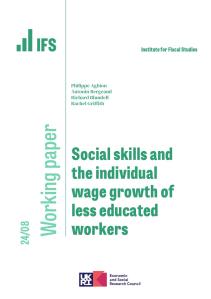The use of income contingent loans (ICLs) for Higher Education (HE) students is becoming increasingly prevalent around the world. Using a model of simulated lifetime earnings for graduates, in this paper we show that the impact of the design of ICLs on the magnitude and distribution of government subsidies is highly dependent on the institutional setting. In particular, the average debt level as a share of average earnings is a key determinant of the impact of various policy parameters. The variance of earnings within the graduate population is also shown to be a determinant of ICL taxpayer costs. This paper is the first comparative exercise of impact of the design of ICLs in different settings, and the findings are highly relevant to countries looking to implement or reform their student loan systems.
Authors

Associate Director
Jack's main interests lie in human capital accumulation and discrete choice dynamic modelling.

Laura van der Erve

Tim Higgins
Journal article details
- DOI
- 10.1016/j.econedurev.2018.06.001
- Publisher
- Elsevier
- Issue
- Volume 71, July 2019, pages 65-82
Suggested citation
J, Britton and T, Higgins and L, van der Erve. (2019). 'Income contingent student loan design: Lessons from around the world' 71(2019), pp.65–82.
More from IFS
Understand this issue

Sure Start achieved its aims, then we threw it away
15 April 2024

Should we worry about government debt?
11 April 2024

A mess has been made of Child Benefit, and the clear-up operation may not be easy
29 March 2024
Policy analysis

The short- and medium-term impacts of Sure Start on educational outcomes
9 April 2024

Sure Start greatly improved disadvantaged children’s GCSE results
9 April 2024

What you need to know about the new childcare entitlements
28 March 2024
Academic research

6th World Bank/IFS/ODI Public Finance Conference | Driving Progress: Public Finance and Structural Transformation

Higher Education Access and Funding: challenges and policy options

Social skills and the individual wage growth of less educated workers
27 March 2024